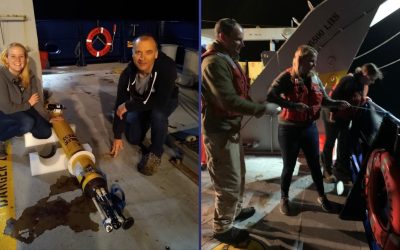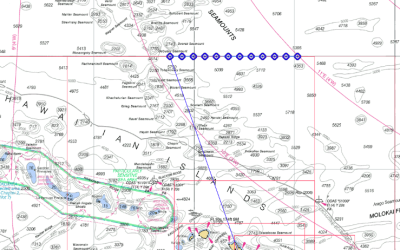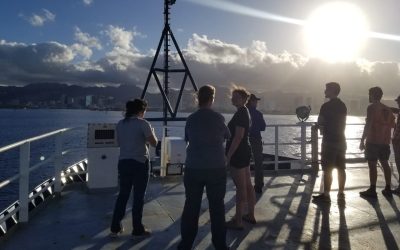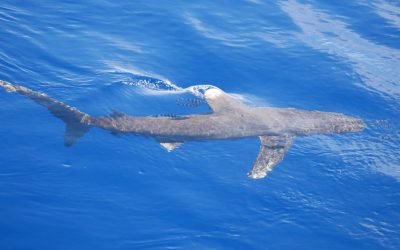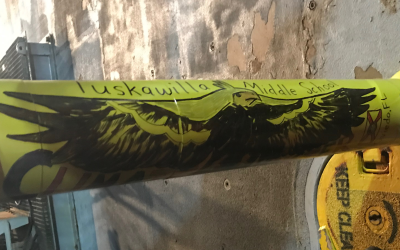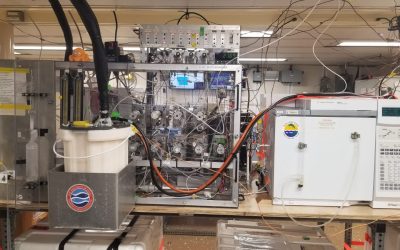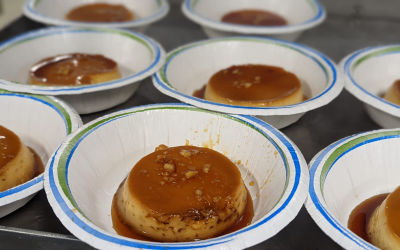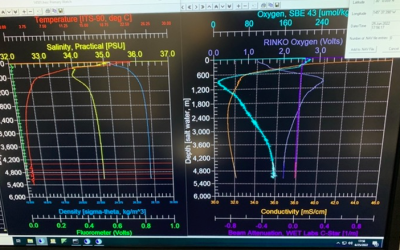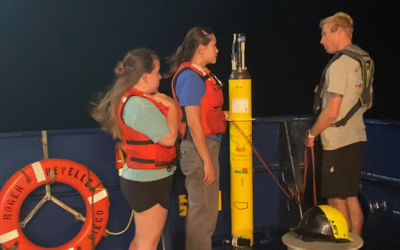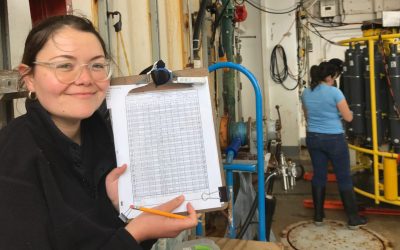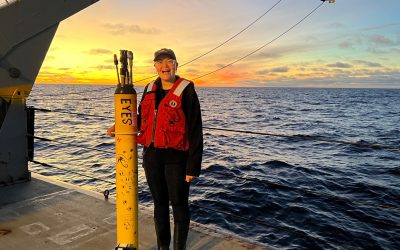Repeat Hydrography 30˚N Zonal Transect
Crossing the Kuroshio Current and passing through the subtropical mode waters of the western North Pacific, GO-SHIP P02 will pass over one of deepest trenches on the planet.
The Global Ocean Ship-based Hydrographic Investigations Program (GO-SHIP) is an international component of the Global Ocean Observing System (GOOS). GO-SHIP provides climate-ready, full-depth observations of most of the physical (temperature, salinity, velocity) and biogeochemical (carbon, nutrients, oxygen, trace elements) parameters needed to track changes in climate. The high accuracy of GO-SHIP data make them the underlying backbone of GOOS, as benchmarks for calibration and validation of autonomous observations.
GO-SHIP is a systematic re-occupation of key global hydrographic sections that span all ocean basins and reach full ocean depth, with physical and chemical measurements of the highest ‘reference standard’ accuracy. GO-SHIP station tracks are repeated every 5 to 10 years, which allows comparison of heat, freshwater, carbon and nutrient distributions over decades.
The new hydrographic data sets collected by U.S. GO-SHIP will contribute to overlapping scientific and technical objectives related to:
-
- Heat/freshwater storage and flux;
- Carbon system and biogeochemical studies;
- Water mass ventilation;
- Model calibration, validation, and state estimation;
- Autonomous sensor calibration, including Core (2000 m T, S), Deep, and Biogeochemical Argo profiling floats.
Building on observations first made in the 1990’s, this program has been critical to developing our understanding of ocean-related climate changes including: warming of the abyssal ocean that takes up ~10% of the Earth’s excess heat; changes in circulation and ventilation; increasing anthropogenic carbon uptake and its impact on global carbon budgets and acidification; declining oxygen concentrations; and expansion of oxygen minimum zones. The U.S. GO-SHIP open data policy has resulted in rapid, widespread availability and use of data. The program benefits society as it is the only globally available source of information about changes in the deep (>2000m) ocean. The data will continue to be a resource for climate model validation. Outreach for U.S. GO-SHIP data collection (cruise-based) and synthesis will extend data usefulness and public awareness. The program will continue to promote and expand scientific and leadership training for graduate students, postdoctoral scientists, and early career scientists. Funds are budgeted for graduate students, postdocs, and young scientists to participate in each cruise, and for an annual postdoc program to entrain young scientists in use of these invaluable observations.
Please join along on the journey by following the expedition blog!
Chief scientist: Alison Macdonald
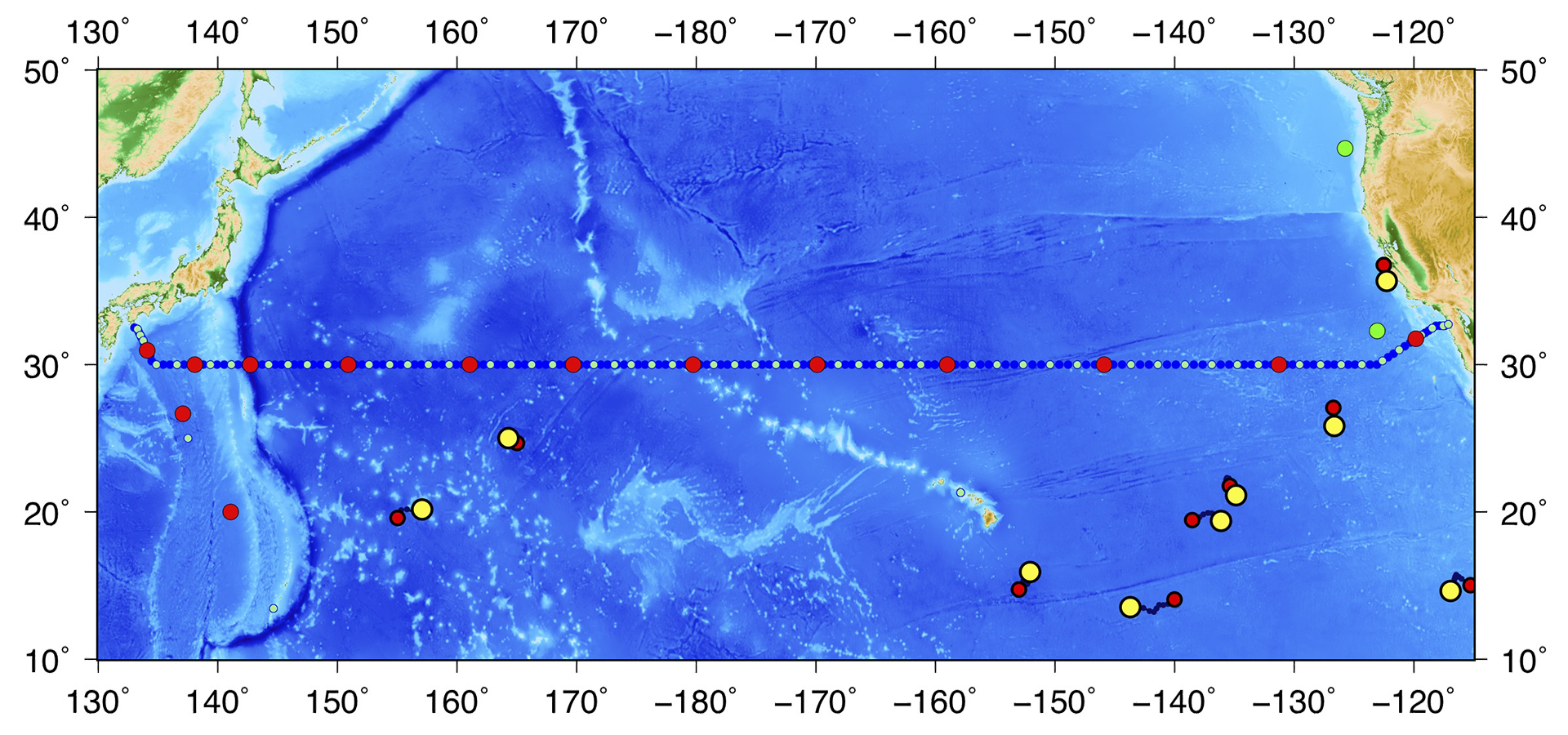
GO-SHIP P02 2022 North Pacific Expedition Logs
Rambler Express
The final GO-BGC float of the PO2 expedition9 July 2022At 3:28 am local time, the Rambler Express began its journey to sample the great Pacific Ocean! It was a chilly morning at 31 45’ N, 119 48’ W, slightly off the coast of San Diego. This float is going into the...
Musical Volcanoes
Cruising amidst the Musician Seamounts28 Jun 2022During our transit to the first CTD station, the ship steamed above the Musician Seamounts, a chain of volcanic undersea mountains and volcanoes dating from the Cretaceous when dinosaurs roamed the Earth. There are many...
Goodbye from Leg 1
A final goodbye as we pull into port in Honolulu11 Jun 2022And now for a final goodbye from those of us on Leg 1 as we pull into port in Honolulu. What can I say other than it's been a pleasure! We are all excited to see land, but we are also sad to say goodbye to...
Wonderful Wildlife
Carol Gonzalez reports on the different types of wildlife that we saw on our trip8 Jun 2022Introducing Carol Gonzalez, one of the CFC analysts, reporting on the different types of wildlife that we saw on our trip! While most of us (with some exceptions) on board...
Climate Buster in the water
Helping to learn more about the climate and the ocean3 July 2022On Friday, July 2, around 9pm we deployed the third biogeochemical Argo float of the 2022 re-occupation of the P02 repeat-hydrography section at 30N 131W. Adopted by the Tuskawilla Middle School in...
Baker Bio Bobber
is deployed during a lovely calm evening26 Jun 2022On Saturday, June 25, around 7:45 in the evening, flanked by a beautiful sunset [Image 1] and a rainbow on the other side [Image 2], we deployed our second biogeochemical Argo float of the cruise at 30N, 145W. Adopted...
Tracer Measurements
A little bit more about CFCs written by David Cooper, our lead analyst 9 Jun 2022 Tracer Measurements on GO-SHIP As promised, here’s a little bit more about CFCs written by David Cooper, our lead analyst! We’re going to get a little science heavy this time since this...
Food!!
A common conversation topic 4 Jun 2022And now, I bring to you, some people's favorite topic… food! Funny thing is that at mealtimes, half of the conversations we end up having revolve around food, haha! Some days we measure time by when meals are ready, and other days...
What’s a CTD?
What is it and what data does it provide?2 July 2022Hello viewers of the P02 Leg 2 blog! My name is Sydney Lewis and I am a member of the biology team. I am currently an undergraduate at the University of Hawai`i at Hilo studying marine science, and this is my first...
Hello Leg 2
Back at work as we launch the first GO-BGC float of Leg 220 Jun 2022Today our watchstanders Alyssa and Turner deployed Mysterious Blue, the BGC float adopted by the Tuskawilla Middle School from Seminole County, Florida. Mysterious Blue, festooned with drawings of the...
Sample Copping 101
Chief Scientist Alison Macdonald explains sample copping8 Jun 2022Hi! Alison Macdonald here. I am Chief Scientist for this expedition along 30°N in the Pacific. As chief sci I have lots of responsibilities, but my favorite task is sample copping. (Image 1)Image 1:...
EYES
Deploying the final Argo float of P02 Leg 1 3 June 2022The final Argo float of P02 Leg 1 – EYES – has been successfully deployed! And what an exciting launch it was. Before we could deploy the float, the captain had to reposition our ship to avoid a gigantic container...

